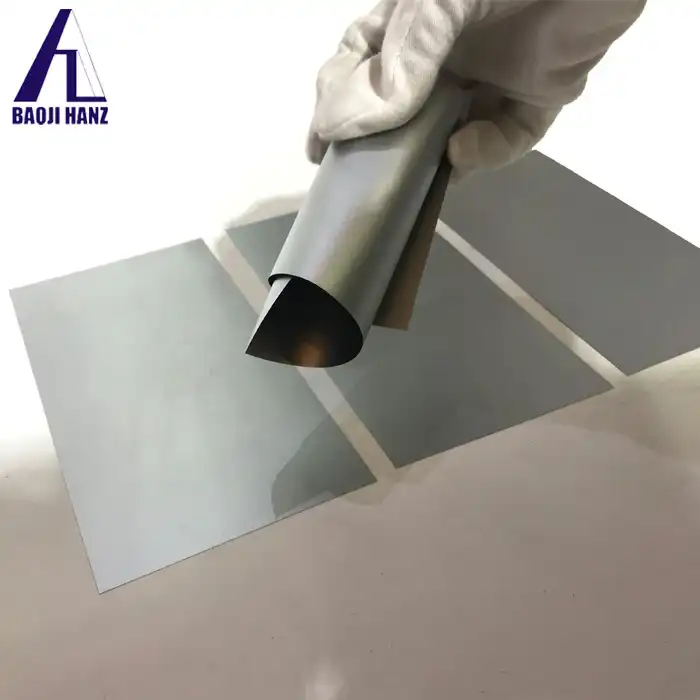How do you use shape memory nitinol foil in practical applications?
2024-10-18 22:38:34
Shape memory Nitinol foil
1. Basic material composition of Shape memory Nitinol foil
Shape memory Nitinol foils are mainly composed of nickel and titanium. The exact ratio of nickel to titanium can vary depending on the intended application, but in general, it contains about 50 to 55 percent nickel atoms, with the rest being titanium. This unique combination of elements gives this alloy extraordinary properties.
Nitinol is known as Nitinol, which is an acronym for Nitinol Naval Ordnance Laboratory. Alloys are formed through a series of metallurgical processes that involve both melting and alloying of the elements. The resulting material has a crystal structure, which is responsible for its shape memory and superelastic properties.
2. Basic concept
The concept of shape memory alloys is based on the ability of these materials to remember their original shape after deformation and then restore their original shape by heating or applying external forces. In the case of Nitinol foils, this property is particularly useful in a wide range of applications.
When the alloy deforms at relatively low temperatures, it bends or stretches easily. However, when heated above a certain temperature, that is, the phase transition temperature, the alloy will undergo a phase transition and return to its original shape. This shape memory effect is caused by the reversible structural change of the alloy from the martensitic phase to the austenitic phase.
In addition to shape memory effects, Shape memory Nitinol foil also exhibit superelasticity. This means that the material can withstand a large amount of deformation without permanent damage and can return to its original shape when stress is removed. Superelasticity is particularly useful in applications where alloys need to be flexible and able to withstand repeated loading and unloading.
3. Production process
The production of Shape memory Nitinol foil involves several steps. First, nickel and titanium are melted together in a furnace to form ingots. The ingot is then hot-rolled or cold-rolled to reduce its thickness and make a sheet or foil.
During the rolling process, various heat treatments are performed on the alloy to optimize its properties. For example, annealing can be used to reduce stress and improve the ductility of a material. Quenching can increase the hardness and strength of the alloy.
After rolling and heat treatment, the foil can be further processed by cutting, punching or stamping to create specific shapes and sizes for different applications. Surface treatments, such as polishing or coating, can also be used to improve the foil's corrosion resistance or biocompatibility.
4. Medical applications
Nitinol foils are widely used in medical field. One of the most common applications is orthodontics. Nickel-titanium bow lines are used to apply gentle and sustained force to the teeth to help them move into the correct position. The alloy's shape memory and superelasticity enable the bow wire to adapt to changes in tooth shape, providing a more comfortable treatment experience for patients.
In addition to orthodontics, Nitinol foils are also used to make medical implants and stents. For example, cardiovascular stents made of Nitinol can dilate inside blood vessels, keeping them open and preventing blockages. The shape memory effect of the alloy allows the stent to be compressed during insertion and then expanded to its original shape once in place.
Another medical application for Shape memory Nitinol foil is surgical instruments. Due to its unique mechanical properties such as flexibility and superelasticity, Nitinol may be used in some surgical instruments. For example, some types of retractors or tweezers may be made of Nitinol to provide better contact and handling during surgery.
5. Basic Characteristics
Shape memory Nitinol foil have several unique characteristics that make them suitable for a wide range of applications. These features include:
1. Shape memory effect: As mentioned earlier, the alloy can remember its original shape and return to its original state when heated or subjected to external forces. This feature is useful in applications where precise shape control is required.
